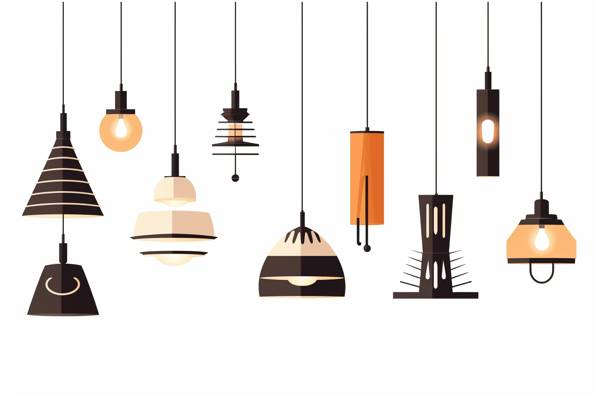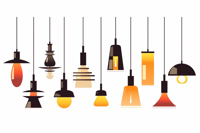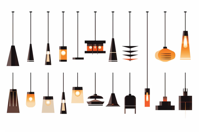The Ultimate Guide to Home Lighting and Decor: Switching to LED Bulbs
In recent years, there has been a significant shift in the world of home lighting and decor. Traditional incandescent bulbs, once a staple in households around the world, are being phased out due to new regulations from the Department of Energy. As a result, many homeowners are now considering LED bulbs as a recommended alternative. In this comprehensive guide, we will explore the benefits of switching to LED bulbs for your home lighting and decor needs.
1. The Phase-Out of Incandescent Bulbs
Incandescent bulbs have long been a popular choice for home lighting, but there energy inefficiency has led to their phase-out. The Department of Energy has implemented regulations to encourage the use of more energy-efficient lighting options, such as LED bulbs. While the phase-out process may vary by country, it is important to be aware of the changing landscape in the lighting industry.
2. The Advantages of LED Bulbs
LED (Light Emitting Diode) bulbs have quickly gained popularity as a superior alternative to incandescent bulbs. One of the key advantages of LED bulbs is their longevity. LED bulbs can last up to 25 times longer than incandescent bulbs, reducing the need for frequent replacements.
Additionally, LED bulbs are highly energy-efficient. They use up to 80% less energy than incandescent bulbs, resulting in significant cost savings on your electricity bill. Not only do LED bulbs save you money, but they also have a positive impact on the environment by reducing greenhouse gas emissions.
When it comes to choosing LED bulbs, there are plenty of options available. For example, the
Brightown Clear Globe G40 Screw Base Light Bulbs are a popular choice for creating a cozy and warm ambiance in any room. These bulbs come in a pack of 25 and are perfect for use in string lights or pendant fixtures.
3. Understanding Brightness: Lumens vs Watts
When shopping for LED bulbs, it is important to understand the terminology used to describe their brightness. Unlike incandescent bulbs, which are measured in watts, LED bulbs are measured in lumens. Lumens refer to the amount of visible light emitted by a light source. The higher the lumen rating, the brighter the light.
To ensure the desired level of brightness for your home, it is essential to choose LED bulbs with the appropriate lumen output. Consider the specific lighting needs of each room and select bulbs accordingly. Experimenting with different lumen outputs can help create the perfect ambiance for your home.
4. Choosing the Right Color Temperature
LED bulbs come in a variety of colors, allowing you to customize the lighting in your home. The most popular color options for LED bulbs are soft white and bright white. Soft white bulbs emit a warm, cozy light, similar to the light produced by incandescent bulbs. On the other hand, bright white bulbs produce a cooler, more energetic light.
When selecting LED bulbs, consider the mood you want to create in each room. Soft white bulbs are often preferred for bedrooms and living rooms, while bright white bulbs are commonly used in kitchens and workspaces. Experimenting with different color temperatures can help you achieve the desired ambiance for every space in your home.
For a soft and cozy lighting option, you can try the
Philips Indoor BR30 Flood Light Bulb. These bulbs have a soft white color temperature and come in a pack of 12, making them perfect for illuminating larger areas such as living rooms or dining rooms.
5. Long-Term Cost Savings
Although LED bulbs may have a higher upfront cost compared to incandescent bulbs, they are significantly cheaper to operate in the long run. Due to their energy efficiency, LED bulbs consume less electricity, resulting in substantial cost savings over their extended lifespan.
The long-term cost benefits of LED bulbs make them an excellent investment for homeowners. By switching to LED bulbs, you can reduce your energy consumption and contribute to a more sustainable future while also enjoying the financial advantages.
6. Dimming Compatibility and Smart Bulbs
Dimming capabilities are an important consideration when choosing LED bulbs for your home. Not all LED bulbs are compatible with traditional dimming switches. To ensure compatibility, it is crucial to select dimmable LED bulbs specifically designed to work with dimmer switches.
Alternatively, you may also consider smart bulbs, which can be controlled through smartphone apps or voice commands. Smart bulbs offer a wide range of customization options, including dimming, color changing, and scheduling. Exploring the world of smart lighting can add a new level of convenience and personalization to your home lighting and decor.
7. Heat Dissipation and Fixture Considerations
LED bulbs produce less heat than incandescent bulbs, but they still generate some heat during operation. It is important to use LED bulbs in fixtures that allow heat dissipation to prevent overheating and maintain optimal performance.
When replacing incandescent bulbs with LED bulbs, ensure that the fixtures are suitable for LED technology. LED bulbs may have different size and heat dissipation requirements compared to incandescent bulbs. Proper fixture selection and installation will contribute to the longevity and efficiency of your LED bulbs.
8. Make the Switch: Be Part of the Change
Switching to LED bulbs is a beneficial choice for home lighting and decor. With their extended lifespan, energy efficiency, and customizable features, LED bulbs offer a superior lighting experience. By embracing this change, you can reduce your energy consumption, save money, and contribute to a more sustainable future.
Now that you have learned about the advantages of LED bulbs, it's time to take action. Evaluate your current lighting setup, identify areas where LED bulbs can make a difference, and start making the switch. Share your thoughts and experiences with LED lighting in the comments section below. How has switching to LED bulbs improved your home's lighting and decor? Are there any challenges you faced during the transition? Let's engage in a conversation about the future of home lighting and decor!






sloghore - October 17, 2023
Great post! LED bulbs are definitely the way to go these days. They save energy and last longer. Plus, they come in so many different styles now that they can fit any decor. Thanks for sharing the ultimate guide!
Mashley302 - October 16, 2023
OMG, dis blog post iz so outdated! Incandescent bulbs are so last century, LED bulbs r the way 2 go now. Get wit da program, peeps! 🙄👎
misconsumption - October 15, 2023
"LED bulbs are so overrated! I've been using incandescent bulbs for years and they give such a warm and cozy glow to my home. Why should I switch to LEDs? They're just too bright and harsh. Plus, the cost of replacing all my fixtures? No thanks! I'll stick with my incandescents, thank you very much!"
blue! - October 14, 2023
Great article! I've been meaning to switch to LED bulbs but wasn't sure where to start. This guide is super helpful. Thanks for the tips!